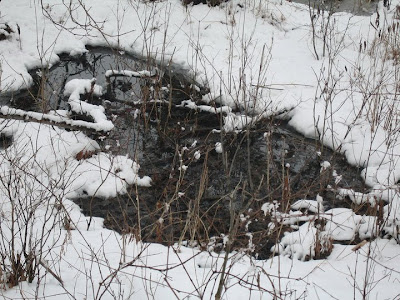Label: Winter
December 20, 2010
Winter Begins with a Lunar Eclipse

We have nearly reached the longest night of the year here in the northern hemisphere. Tomorrow night, December 21 (or December 22 in some years), known as the "winter solstice," is also the day we consider to be the official beginning of winter. Solstice means "the sun stands still," and the winter solstice is the day when the midday sun is at its lowest point above the horizon. It seems to hover there, never rising very high in the sky, and then sets again - hence the idea that the sun is "standing still." This happens because Earth is tilted on its axis in such a way that the northern hemisphere is pointing farther away from the sun than at any other time of the year.
This year’s "longest night" will be an even darker night than usual during a full moon (at least for some hours), because the arrival of the winter solstice coincides with a full eclipse of the moon in the early hours of December 21 (late tonight). And this lunar eclipse is going to be a beauty - visible to everyone in Northern and Central America (if the skies are clear and the weather cooperates).
Do you know what happens during a lunar eclipse?
Think about it. We see the full moon shining brightly in the sky because it is illuminated by the sun. What we call "moonlight" is really just sunlight reflected back at us from the moon. So, what would cause the full moon to suddenly go dark?
It could only happen if the sunlight were cut off.
And what could possible block sunlight from reaching Earth’s moon? That’s right, our planet EARTH itself! A lunar eclipse happens when the Sun, Earth and the Moon are all in a straight line, so that for a little over an hour, the moon is completely in the darkness of earth’s shadow.

It will not completely disappear - instead, it becomes
a deep, deep orange color. It takes 3 to 4 hours to
see the whole event from when the first shadow starts
to creep across the moon’s surface until it is fully
obscured, and then the shadow gradually recedes,
eventually leaving the full moon glowing in the sky again.

Here are the times, if you decide to stay up (or go to bed and then get up in the middle of the night) to see it.
Happy Winter Solstice, everyone!
Posted by: Seymour Simon
March 1, 2010
Photographing Snow

It has been snowing for days where I live in New York State. The roads were clear by Sunday morning and we took a drive and photographed the incredible sights, with wet, heavy snow coating everything. 
This photograph got me thinking about a fascinating exception that exists in nature. Most non-metallic substances contract as they get colder. Not water, though. Water contracts until it gets down to about 39 degrees F. Then it begins to expand until it freezes and turns into ice. So why is that important? Well, it means that when water turns to ice, the ice forms at the surface rather than at the bottom of a pond, lake or ocean. The warmer water sinks. That’s why ice floats. And that’s one of the reasons that living things in ponds and lakes can survive the winter at the bottom where water is still liquid and not frozen solid.
Posted by: Seymour Simon
February 27, 2010
Snowfall in the country
Wet, soft snow sticks to the branches of trees and coats them until the temperature rises and the snow melts and softly falls to the ground.

Posted by: Seymour Simon


